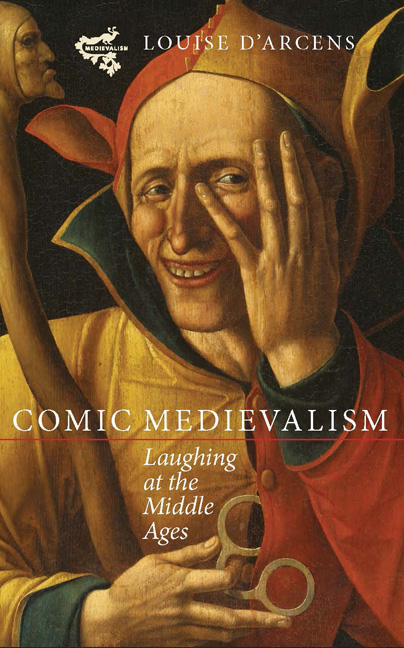Book contents
- Frontmatter
- Dedication
- Contents
- Illustrations
- Acknowledgements
- I THE SET UP
- Introduction: Laughing at, with and in the Middle Ages
- 1 The Cervantean Paradigm: Comedy, Madness and Meta-Medievalism in Don Quixote
- II OLDIES BUT GOODIES: COMIC RECOVERY
- III HIT AND MYTH: PERFORMING AND PARODYING MEDIEVALISM
- IV THAT'S EDUTAINMENT: COMEDY AND HISTORY
- Afterword: Laughing into the Future
- Bibliography
- Index
1 - The Cervantean Paradigm: Comedy, Madness and Meta-Medievalism in Don Quixote
from I - THE SET UP
Published online by Cambridge University Press: 05 November 2014
- Frontmatter
- Dedication
- Contents
- Illustrations
- Acknowledgements
- I THE SET UP
- Introduction: Laughing at, with and in the Middle Ages
- 1 The Cervantean Paradigm: Comedy, Madness and Meta-Medievalism in Don Quixote
- II OLDIES BUT GOODIES: COMIC RECOVERY
- III HIT AND MYTH: PERFORMING AND PARODYING MEDIEVALISM
- IV THAT'S EDUTAINMENT: COMEDY AND HISTORY
- Afterword: Laughing into the Future
- Bibliography
- Index
Summary
The man crashes to the dirt floor and lies motionless, unhorsed by the blow of a lance to his chest. His alarmed opponent leaps from his horse and runs to the man's aid. ‘Well done, good sir’, says the vanquished knight, ‘you are the victor; but we will meet again.’ As the weary men rise, gauntlets clasped above their heads in camaraderie, the crowd roars at the lengthy and violent spectacle it has just witnessed. The date is 1996; the place is the Buena Park outlet of the theatre-restaurant chain Medieval Times; and the men are Chip Douglas and Steven Kovacs, the two protagonists of the dark comedy The Cable Guy, directed by Ben Stiller. In this, the film's famous ‘Medieval Times’ scene, the unstable Chip (the eponymous cable guy), obsessed with gaining Steven's friendship but also consumed by lonely malice, has secretly arranged for the two of them to engage in public mock combat ‘to the death’, according to the ‘King’ of Medieval Times, ‘to resolve a grievance’. What ensues is an onslaught in which reality dissolves into violent chivalric fantasy, with Chip wielding a sword, a flail, a battle axe and a lance with such clear intent to harm that the Medieval Times performers are as frightened of him as Steven is.
- Type
- Chapter
- Information
- Comic MedievalismLaughing at the Middle Ages, pp. 23 - 40Publisher: Boydell & BrewerPrint publication year: 2014

